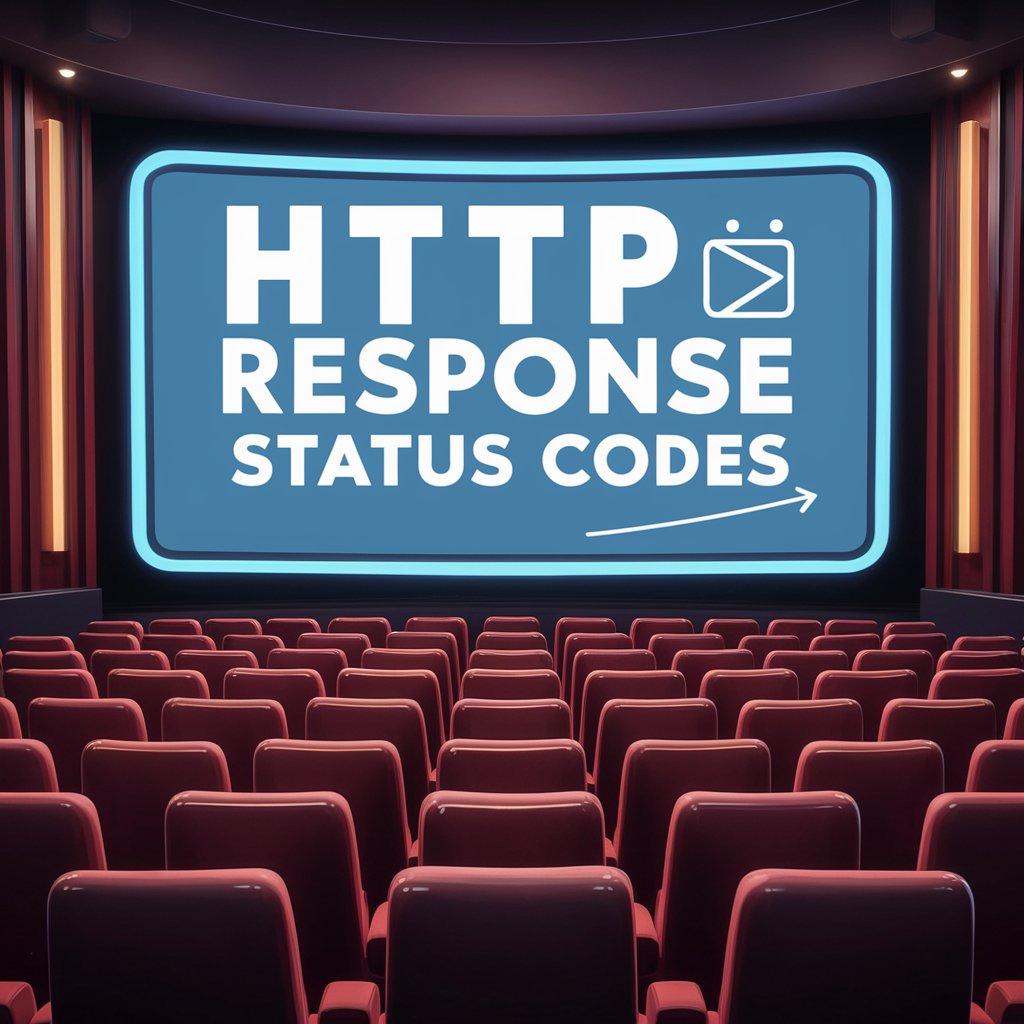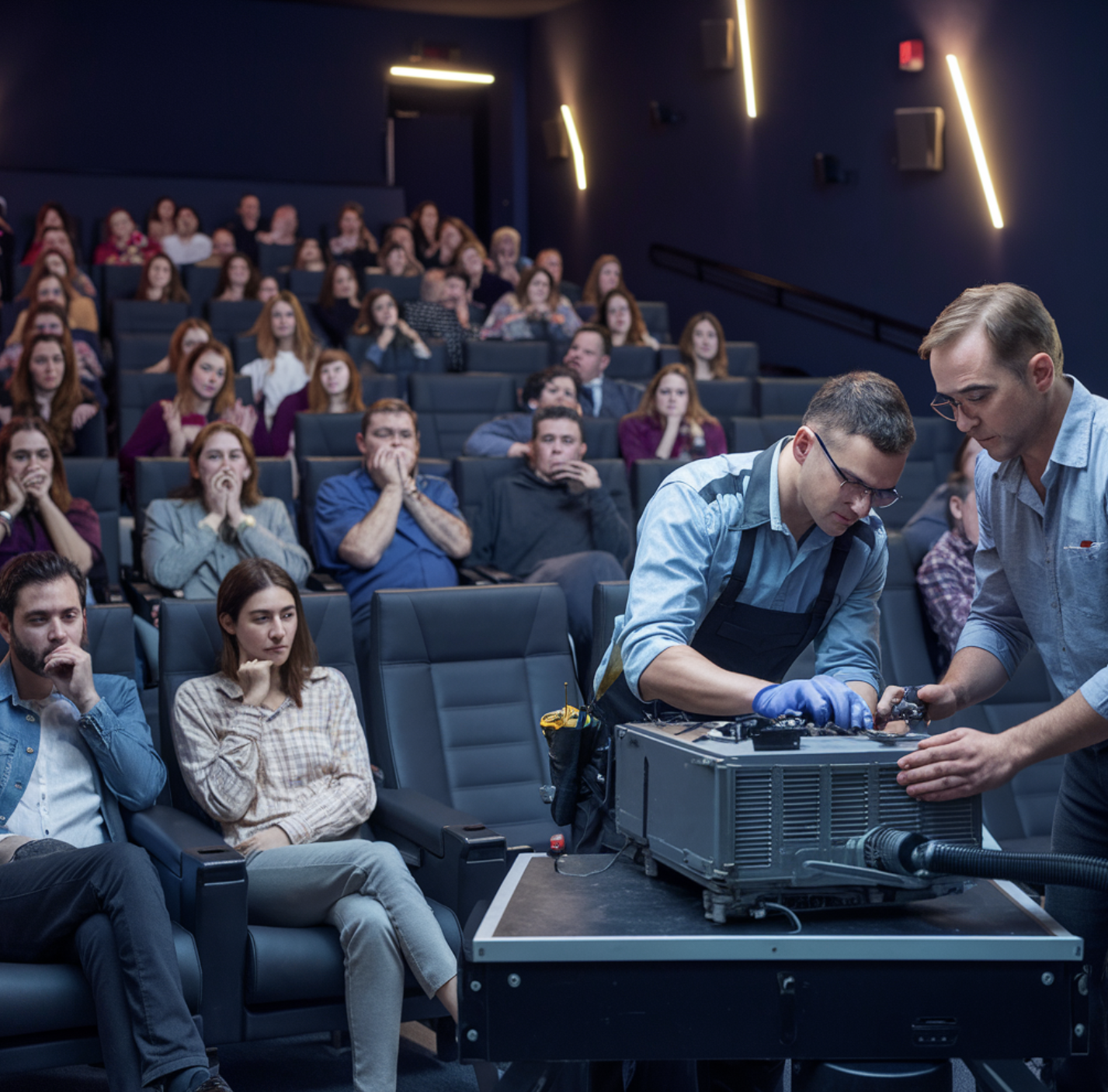HTTP Response Status Codes via MOVIE Theater 🎬🍿
 AARYAN BAJAJ
AARYAN BAJAJ
HTTP Status Code ( 100-199):
HTTP 1xx status codes, also known as informational responses, act like the early buzz in a theater before a movie starts, signalling that everything is setting up, but the main action hasn’t begun. These codes indicate that the request has been received and understood by the server, and that the process is ongoing. For example, the 100 Continue status allows a client to continue sending the request body after the server has sent an initial approval. Similarly, 102 Processing assures that the server is processing the request but no response is available yet. They set the stage for further communication and data exchange, much like the anticipatory whispers and dimming lights that precede the main event in a cinema.

HTTP Status Code ( 200-299):
HTTP 2xx status codes signify that the request was successfully received, understood, and accepted—much like when the movie starts rolling after the previews. It's showtime! As the projector hums to life and the audience settles into a hushed anticipation, the main feature begins. These status codes, such as 200 OK which confirms that a request has been successfully processed, or 201 Created for when something new has been added to the server, mark the successful interaction between client and server. Just like a well received opening scene sets the tone for the movie, these status codes establish a smooth start to digital communications, ensuring all systems are go and the audience whether in a theater or behind a screen can look forward to a satisfying experience.

HTTP Status Code ( 300-399):
HTTP 3xx status codes function like a theater usher guiding you to another room because the one you initially chose is full offering new directions, but ensuring you still get to see the movie. These codes are used for redirection; they tell the client that further action needs to be taken to complete the request. For example, the 301 Moved Permanently status informs the client that the requested resource has permanently moved to a new URL, similar to being permanently directed to a different theater room. Meanwhile, 302 Found serves more as a temporary redirection, akin to being asked to switch rooms only for today’s showing. Such codes keep the user's journey towards the desired content on track.

HTTP Status Code ( 400-499):
HTTP 4xx status codes are akin to arriving at the movie theater with an expired ticket there's an issue on your end that prevents entry. These status codes indicate client errors, signaling that the request contains bad syntax or cannot be fulfilled due to mistakes on the client side. For example, 404 Not Found is like arriving at a theater for a movie that isn’t showing perhaps you got the schedule wrong. Similarly, 403 Forbidden is akin to trying to enter a VIP area with a standard ticket; you’re not allowed in without the right permissions. These responses serve as direct feedback that something needs to be corrected by the requester to gain access to the desired resource, ensuring clear communication of what went wrong in the interaction.

HTTP Status Code ( 500-599):
HTTP 5xx status codes are like experiencing a projector malfunction at the movie theater despite having a valid ticket the movie can't be shown due to a technical hiccup on the theater's part. These status codes signify server errors, where the problem lies with the server's inability to process the request. For instance, 500 Internal Server Error occurs when the server encounters an unexpected condition that prevents it from fulfilling the request, much like a sudden projector breakdown. Similarly, 503 Service Unavailable is as if the projector is temporarily out of service, indicating that the server is currently unable to handle the request but may be able to do so later. These codes highlight issues that need resolution by the server administrators to restore functionality and ensure the audience can enjoy the movie as intended.

Conclusion
HTTP status codes provide a dynamic way to understand the state of web interactions, mirroring various scenarios one might encounter at a movie theater. From the preliminary buzz of 1xx codes, setting the stage for action, to the fulfillment and satisfaction represented by 2xx codes when the film rolls, each series of codes offers distinct feedback. Redirects in 3xx codes adjust the path, while 4xx codes highlight user errors akin to having an expired ticket. Finally, 5xx codes reflect server-side issues similar to a projector malfunction. Each category efficiently communicates the necessary information to adjust and proceed, ensuring a smooth digital experience.
Subscribe to my newsletter
Read articles from AARYAN BAJAJ directly inside your inbox. Subscribe to the newsletter, and don't miss out.
Written by

AARYAN BAJAJ
AARYAN BAJAJ
Hi Everyone 👋🏻 , I'm Aaryan Bajaj , a Full Stack Web Developer from India(🇮🇳). I share my knowledge through engaging technical blogs on Hashnode, covering web development.